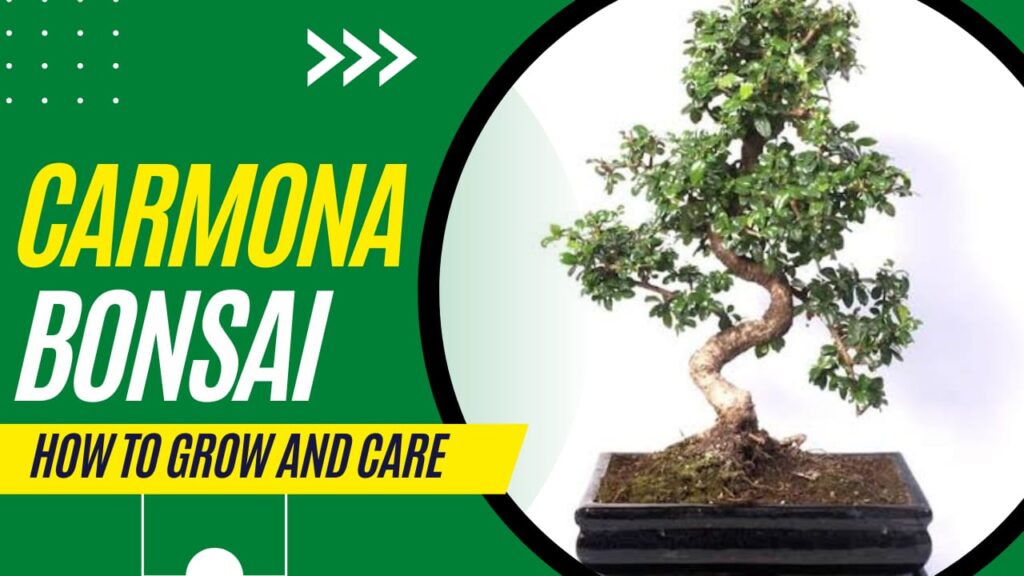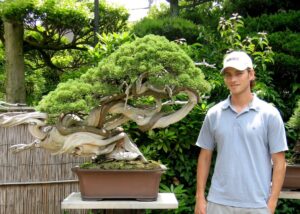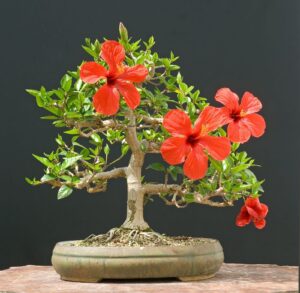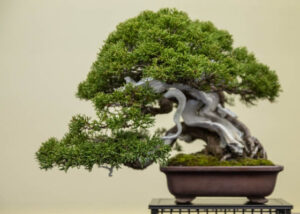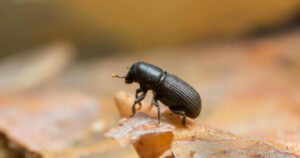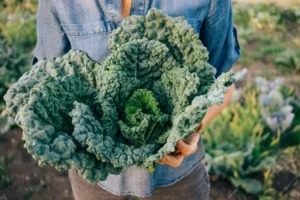Are you thinking of adopting a bonsai plant and bringing it home? Not a bad idea! Carmona bonsai plants can be the right choice from my personal experience. This bonsai is perfect for beginners who want to practice the ancient art form.
In today’s blog, I will discuss everything you need to know about the Carmona bonsai plant and I will let you know all the secrets of this plant! So, why are we waiting? Let’s begin!
Before I start on how to propagate this bonsai, how to grow and take off this plant, let me first start with why is this bonsai important for you to bring home.
About Carmona Bonsai Plant
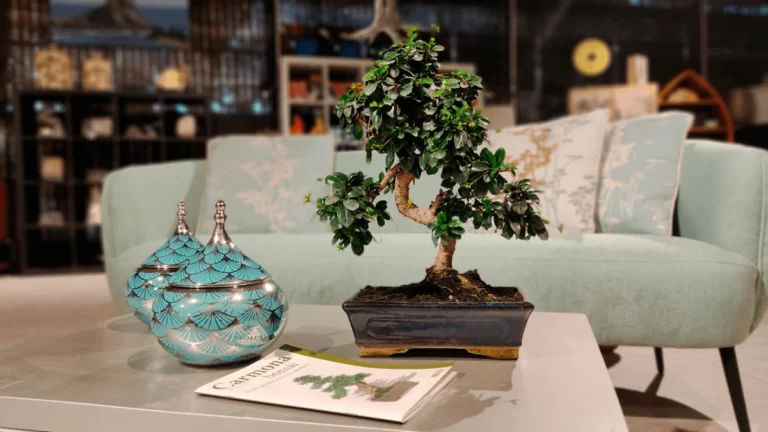
Carmona is a flowering plant from the family of Boraginaceae. The Carmona genus has no other species, it is monotypic. Carmon retusa was first found in the places between the eastern part of India to the southern part of China and also in Taiwan, Malaysia, Japan, and the Solomon Islands. Scientifically, it is called Ehretia microphylla. It is commonly called “the Fukien tree”.
Carmona retusa or the Fukien tea trees have thick and strong trunks, attractive barks, and glossy leaves. The young Carmona plants have small and elliptical leaves. After turning into a mature plant, the foliage becomes denser and develops pilosity. Also, these plants produce tiny and delicate white flowers throughout the year.
Carmona trees produce tiny fruits that are generally in black, red, or green color. This bonsai looks beautiful even without blooms. These plants are often made into bonsai trees and kept at home because it needs less care and a beginner-friendly plant. A sunny spot in your home is enough for them to survive. There are many things to know about growing Carmona bonsai trees at home. In this article, I will discuss them all.
How to propagate Carmona plants?
Propagation of Carmona can be done with seeds and cuttings. Mostly cuttings are used to propagate Carmona plants. Let’s know how to propagate these plants.
Propagating Carmona through seeds
Soak the seeds in the mix-filled lukewarm water for about a day as it helps to break the dormancy. Now, place the seedlings in the soil mix-filled pot. It takes some time, including the weather conditions, to see the small plant growing from them. Make sure you leave at least a 2-inch gap between any two seedlings.
Propagating Carmona through cuttings
Cut the young stem that has grown on a healthy plant. You can collect it during the pruning process. Now, plant it in the soil mix of the new pot. It takes 2-3 months to develop roots and it is better to collect the cuttings in the spring.
How to Grow and Care for Carmona bonsai trees?
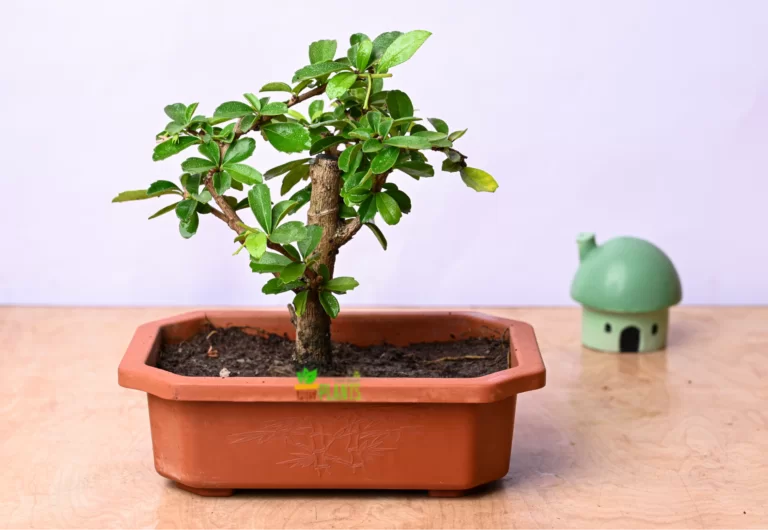
Carmona plants can be grown easily and so they are made into bonsai trees. Although they are tropical plants, they can be kept indoors. The growth of Carmona bonsai can be observed at every node. If a short shoot grows at a node that may be not elongating and the long shoot that grows may stimulate the main shoot.
You will enjoy growing them indoors if you care enough. I have mentioned below some tips to follow so that you can grow a healthy Carmona at home easily:
1. Sunlight requirements of Carmona bonsai tree
Carmona grows well in sunlight but it also thrives well at room temperatures. It is said that the suitable temperature for Carmona bonsai is 20 degrees Celsius. Remember to keep your Carmona bonsai on a windowsill to let it absorb maximum light. Make sure your plant receives at least 4 hours of direct sunlight in a day. Do not leave your Carmona bonsai tree outdoors on the cool winter nights, because they cannot tolerate the low temperatures.
Placing your Carmona bonsai tree outdoors during summer may help its growth. In cold temperatures, use a plant light to encourage growth. But also remember that these artificial lights can make the bonsai very dry. So, always take certain precautions or try misting your plant in dry conditions to keep it humid. If your Carmona bonsai is placed indoors at a windowsill, make sure that you close the window in the evening to avoid the frost air entering in, especially in winters.
2. Watering a Carmona bonsai tree
The Carmona bonsai tree needs moderate watering. It needs regular watering to survive but over-watering may cause root rot. Before you water the tree, check the surface of the soil. If it is a little dry, then water it, or else, wait for the soil to dry.
You can also use a moisture meter in the beginning to know your bonsai water requirements. While watering, slowly water your plant until the excess water comes out of the drainage holes. Water it twice or thrice a week in the spring, autumn, and winter seasons. But in summer, water your bonsai daily.
3. Misting the Carmona bonsai tree
Try to mist your bonsai regularly. Carmona bonsai loves to stay in humid conditions. Do not put your plant in dry environments. In the summer, mist it daily. Misting keeps the plant fresh and maintains the humidity. You can also place a large tray filled with water below the Carmona bonsai so that the water in the tray does not go into the pot and also keeps the moisture.
4. Soil Mix for Carmona bonsai tree
Use quality soil to fill the pot of your bonsai. You can use organic matter in the soil mix, to enhance the growth. Make sure that the soil mix is a well-draining one. A mixture of Akadama, prunus, and humus, is considered to be a suitable soil mixture for the Carmona bonsai trees.
5. Potting and repotting Carmona bonsai tree
You can use a ceramic or clay pot to plant Carmona because a plastic pot will not absorb the excess water. Pot your Carmona bonsai plant with the preferred soil mix.
Your Carmona bonsai needs to be repotted after every 2 years. Changing the soil allows the roots to absorb some new nutrients and gives some more space to grow. It is preferred to repot your bonsai in spring, which is the growing season of Carmona to increase the growth.
6. Fertilization of Carmona bonsai tree
Taking care of your Carmona bonsai involves fertilization because the small amount of soil in the little pot may not have the necessary nutrients and after some days, may affect your bonsai Carmona’s growth. Fertilize your plant with solid organic fertilizers as they are suitable for the sensitive roots of the Carmona bonsai trees.
If you use a liquid fertilizer then make sure that the soil is moist and dilute it according to the given instructions on the wrapper. Fertilize your bonsai from spring to autumn and once a month. It helps your blooming Carmona to produce more flowers. Use phosphorus-rich fertilizers in the spring and Potassium-rich fertilizers in the rainy season. It is better to reduce fertilizing your bonsai in the winter season.
7. Pruning the Carmona bonsai tree
Pruning a bonsai tree helps in maintaining the shape and encourages growth. Carmona trees allow pruning as it can tolerate a little heavy pruning; you can prune the leaves and stem of your Carmona to get the desired shape and maintain it as a beautiful bonsai indoors. Pruning can be done throughout the year.
Although it can be pruned heavily, it is better to leave at least 2-3 leaves on a stem to allow its healthy new growth. Young stems and leaves can be trimmed easily but the matured stems cannot be pinched, so use sharp equipment for pruning and also to avoid crushing of stems. While trimming the roots, be careful because they are sensitive. If any part of your Carmona is infected due to some pests or diseases, then trim that part.
8. Wiring of the Carmona bonsai trees
Wiring is a crucial part of designing your bonsai tree. Carmona plants may not need wiring but pruning is enough to be attractive. But if you still want to shape your carmona bonsai tree, use thin wires to wind the young stems of your bonsai while training, because they are flexible and can be easily shaped. Wind the wire loosely to avoid crushing it.
You can use the same type of wire to wind the strong branches and trunk; in this case, wind it a little tightly to get desired shapes. You can even use a thick wire to wind the trunk of your bonsai loosely. It is recommended to cut the wire, instead of rewinding it to prevent the cuts. Also, cutting the wires should be done very carefully.
9. Pests and diseases
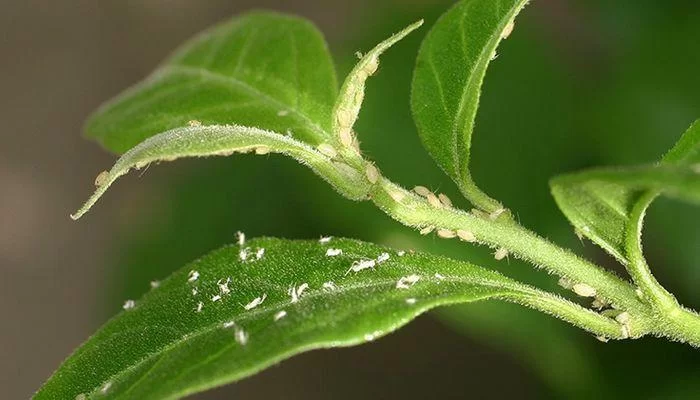
Some of the pests and diseases that occur to Carmona bonsai plant are given below:
- Over-watering your Carmona bonsai will lead to root rot. It is a serious disease and if you ignore pruning the rotten part, your Carmona bonsai will not survive.
- Under-watering will also damage your plant. Your plant will get dry and lose its capability of holding leaves.
- If you provide proper care then your Carmona bonsai tree will not get infected by pests and diseases, because it is a hard plant. In case your bonsai is infected by pests, even though you are giving proper care, then use pesticides or insecticides to get rid of them temporarily to prevent these problems, follow the above care tips.
Mostly, Carmona bonsai trees get infected by:
- Spider mites:
If you provide more nitrogen to your plant, the excess nitrogen leads to the growth of spider mite which grows in the underparts of the leaves. It sucks the sugars in the leaves.
- Scale:
Scale is the growth of wax shells that look like bumps on the stems (mostly in black and brown colors), and contain insects. These bumps secrete white sap that causes discoloration of foliage.
- Whiteflies:
These are the small insects that grow on the lower part of the leaf and suck the juice and finally lead to leaf-fall.
- If you water your bonsai with hard water, then the leaves may show signs of Chlorosis. Use iron-rich fertilizer to get rid of it. Cuts or wounds may lead to fungal growth on the surface, use fungicides to avoid them.
Uses and Benefits
Did you know the leaves of Carmona bonsai are dried, powdered, and used as medicines?
There are many uses and benefits to keeping a Carmona bonsai plant at home which is why it is popular all over the world. Let’s find out the secret uses and benefits of this plant and why it is so important for you:
- The Carmona retusa leaves have properties so that the juices extracted from them substitute tea and reduce fever. It gives relief from stomach aches, cough, dysentery, and diarrhea.
- Take some decoction of the leaves to treat any stomach-related problems.
- In some places like Madura, the roots of Carmona are ingested to detoxify the body after delivering a baby.
- Indians believe that plant-based poisons can be counteracted by using these plant juices.
- Traditionally, it is used as an antidote to viper bites.
- Growing a bonsai-like Carmona at home improves the oxygen levels.
- These flowering bonsai trees spread a little but beautiful fragrance in the room.
- The leaves of it are harvested and allowed to dry in shade. Later they are powdered and packed as tablets.
FAQs:
Q1. What are the medicinal benefits of the Carmona bonsai tree?
Ans. Carmona stands in one of the top 10 medicinally benefiting plants in the Philippines. There are many medicinal benefits of Carmona. It is used to treat colic pain, cough, diarrhea, and dysentery. Carmona roots are used in making antidotes to the poisons that are produced from plants.
Q2. Are Carmona bonsai trees toxic?
Ans. Maybe, it is slightly toxic. Direct intake of Carmona may cause mouth irritation and stomach upset and can lead to vomiting.
Q3. What is the lifespan of Carmona bonsai trees?
Ans. They can live more than 100 years with proper care.
Q4. Do Carmona bonsai trees go dormant?
Ans. No, they are not dormant. But bring them inside during the winters and avoid leaving them in freezing environments.
Q5. Why is my Carmona bonsai tree losing leaves?
Ans. The Carmona bonsai tree loses its leaves because of low humidity. If you use plant lights or propane heaters for a long time, it may result in decreasing humidity levels. Root rot is another cause of the leaf-drop.
Q6. How often should I water my Carmona bonsai tree?
Ans. It depends on the weather conditions and the environment at your place. Watering your plant every 2-3 days is ideal in any conditions except in summer. Your Carmona needs more water during the summer.
Conclusion
Growing a Carmona bonsai tree helps to improve your gardening skills and gives you the confidence to grow more. Also, it improves the air quality and gives you a peaceful environment. You can keep them in living rooms or office desks and give those spaces a mesmerizing appearance.
It is also said that this bonsai brings good luck, positive vibes, and a smile to your face. So, bring home Carmona!
Did you like this article? If yes, drop a comment below, and don’t forget to share this article with your friends and family!
Related Articles
- Top 10 Bonsai Tree for Sale in India
- Unique Bonsai Gifts: Perfect for the Plant Enthusiast
- Bonsai Tree in a Terrarium – An Ultimate Guide To Build Bonsai Terrarium.
- Redwood Bonsai Care Guide: How to Grow, and Bonsai For Sale
- Growing Kale Indoor From Seeds With LED Grow Light
- Best Bonsai Plants to Grow in Summer
